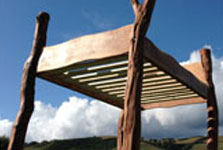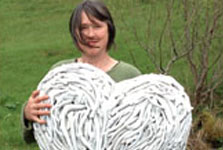Magical Faerie Chairs


Through the magical powers of storytelling, dreams are brought to life.
Giants, pixies and faeries come alive and carry you off into fantastical worlds, where anything and everything is possible.
What better way to celebrate the tradition of reading and telling stories than a magical faerie storytelling chair?
See our full range of faerie storytelling chairs here.






Definition: A fairy (also fay, fae, fair folk; from faery, faerie, “realm of the fays”) is a type of mythical being or legendary creature in European folklore, a form of spirit, often described as metaphysical, supernatural, or preternatural.
Fairy comes from the Old French word faerie.
Today, when we think of fairies, we often visualise them as tiny, supernatural beings with wings and glowing with uncommon light in today’s children fairy tales. They also possess some sorts of strange magical powers, like Tinkerbell in the story of Peter Pan or the Fairy Godmother in Cinderella.
The fairies are supernatural beings that can be best described by the Greek word – daimon, which means “spirit” and they have been around a long time. Perhaps the earliest form of faeries can be found loosely in the mythical beings in Greek mythology, such as the nymphs, satyrs and sileni. The nymphs from ancient Greek myths can be considered as fairies and they existed as early as the time of Homer writing the Iliad and the Odyssey. Even the river gods in Greek myths can be classified as fairies. These are spirits or minor deities of nature or of the natural phenomena.
And then, there are household or guardian spirits that can be found in Roman religion and mythology, such as the penates, lares and genii.
The Norse versions of the fairies are the wide variety of elves and the dísir that exist in the Teutonic traditions. The Valkyries could also be classified as fairies.
It was during the time of Queen Elizabeth I of England, where William Shakespeare (1564-1616) had popularised fairies in English folklore, in his play Midsummer Night’s Dream, with the characters Oberon, Titania and Puck. Earlier than Shakespeare, Chaucer (1342-1400) mentioned that the land of Britain was filled with fairies before the time of King Arthur.
In the Arthurian legends, the divine or fairy figures also appeared in abundance. Morgan, Arthur’s half-sister, seen to be great sorceress and healer, was often called Morgan le Fay; her nickname Fay, which means “Fairy”. And then there is this Lady of the Lake. Arthur’s wife, Guinevere, or Gwenhwyfar in the Welsh tradition, also appeared to be a fairy, as well as the sovereignty goddess.






